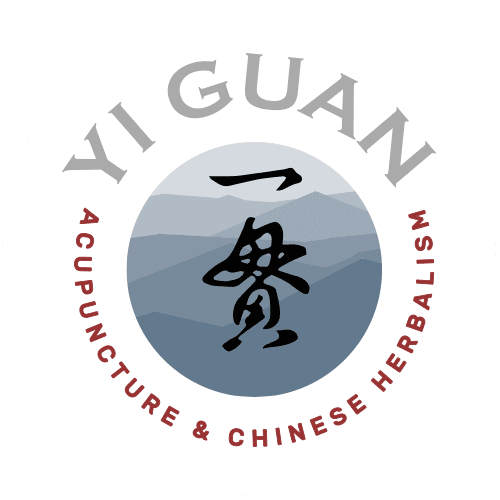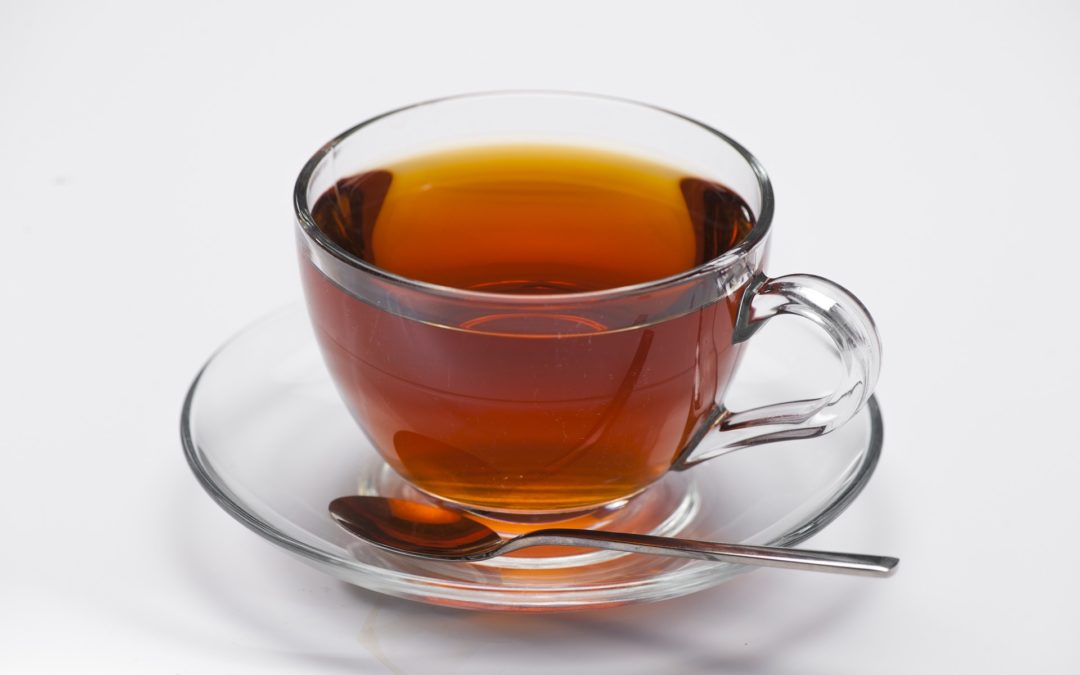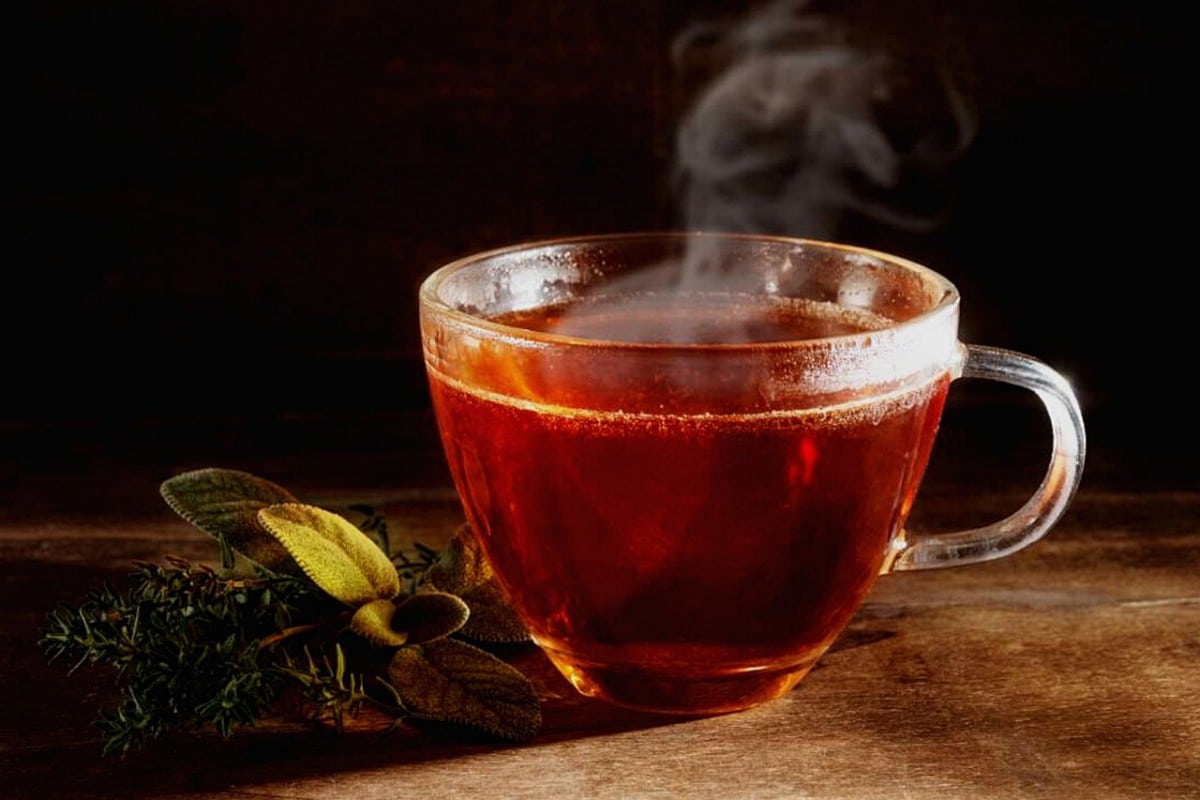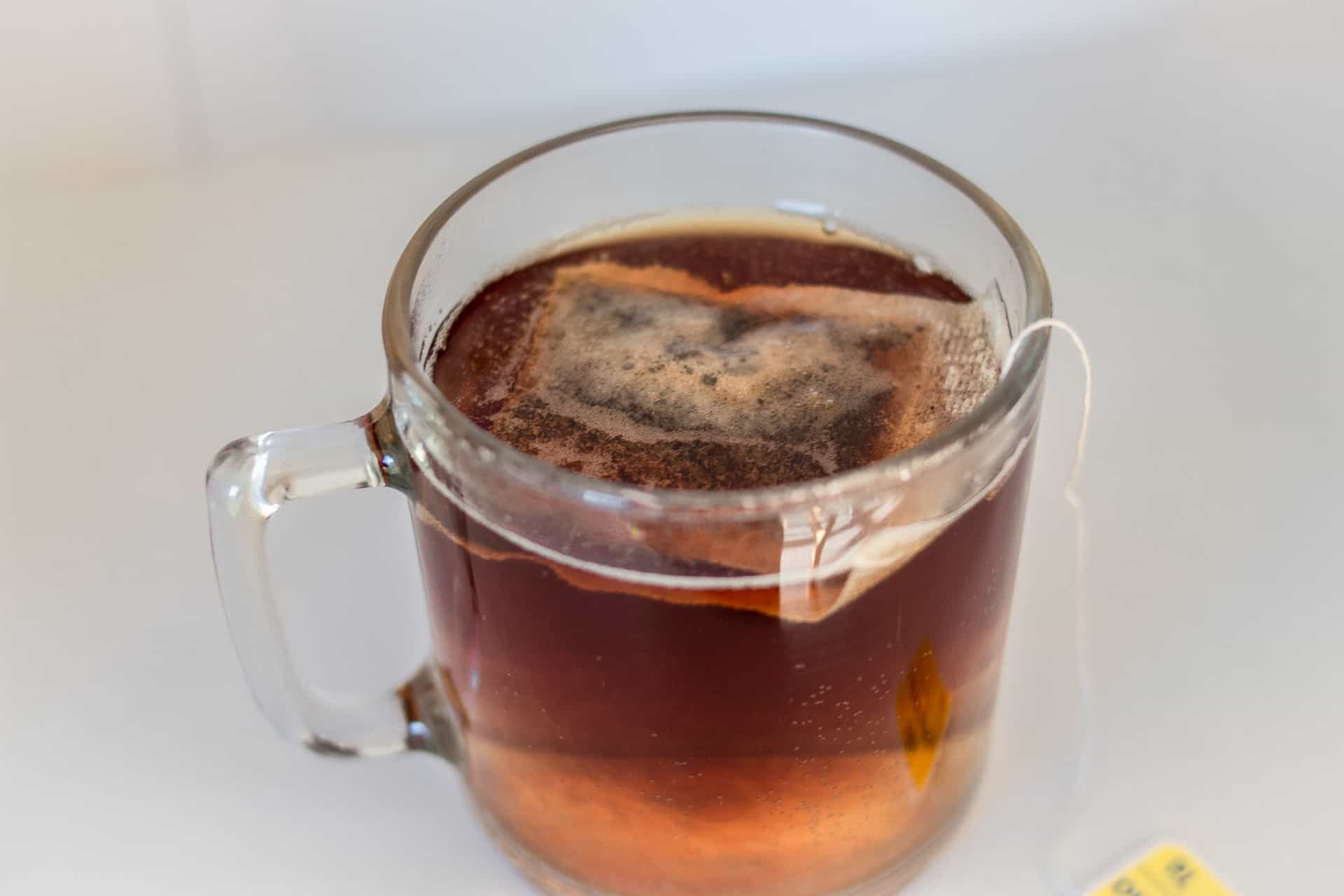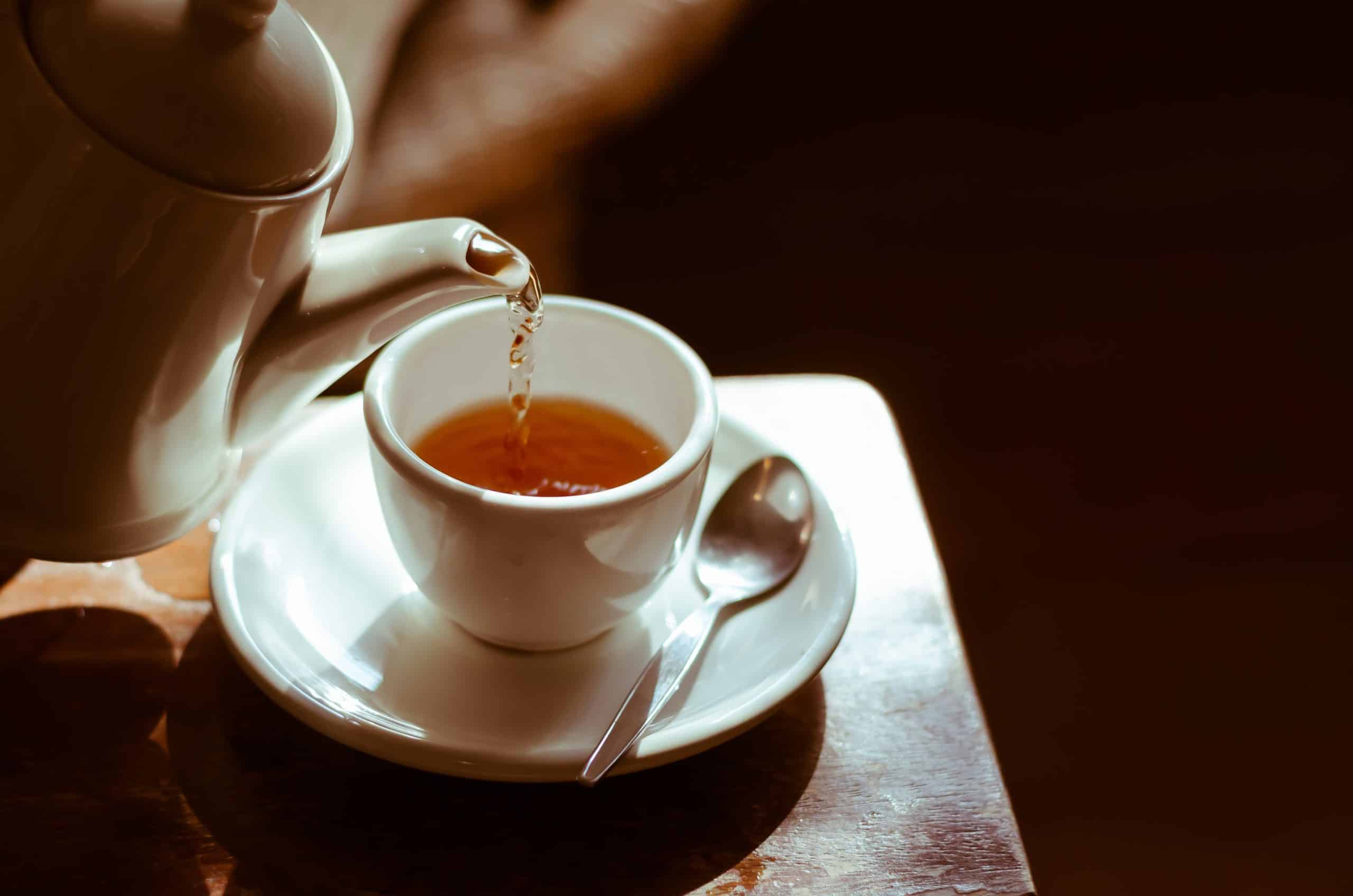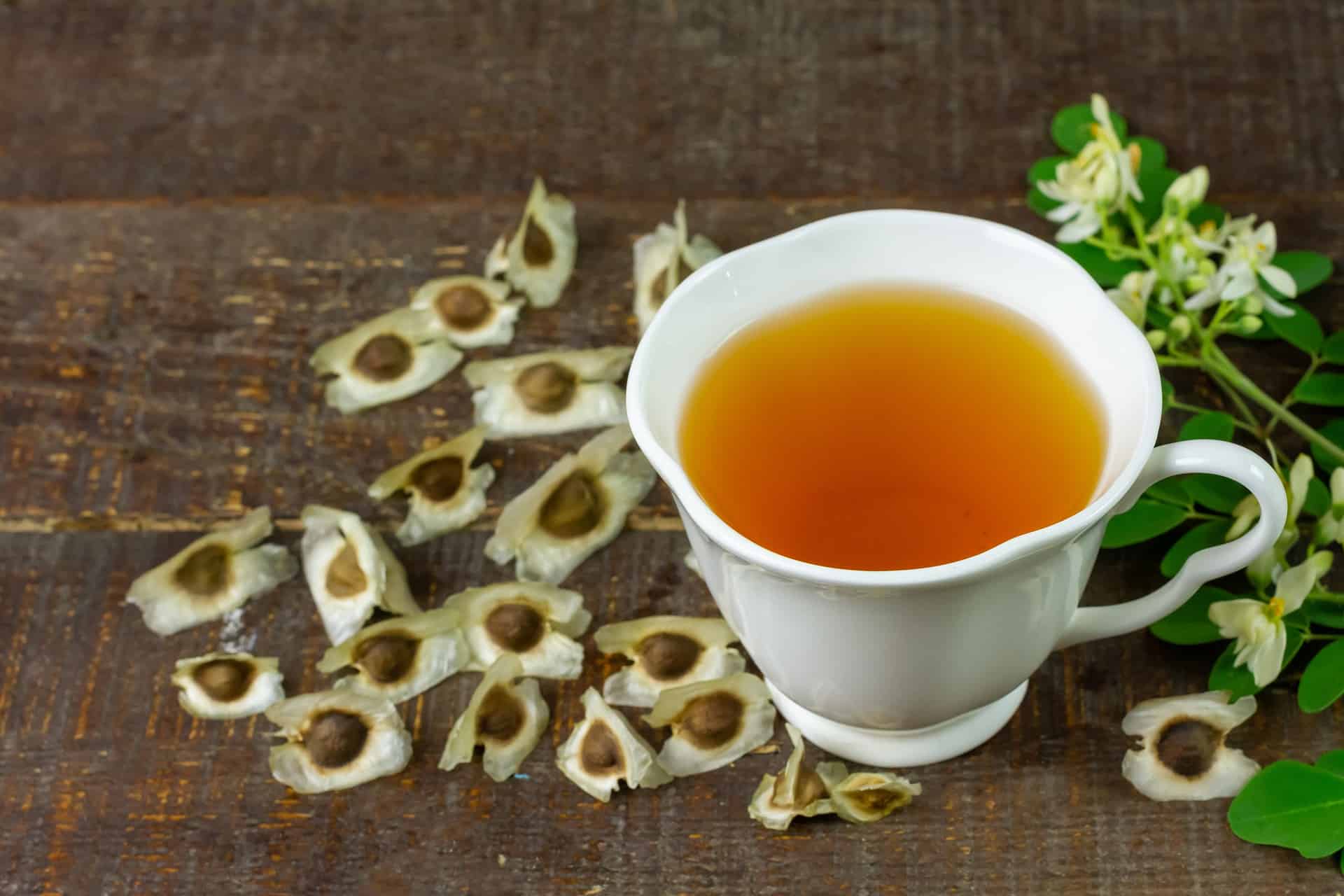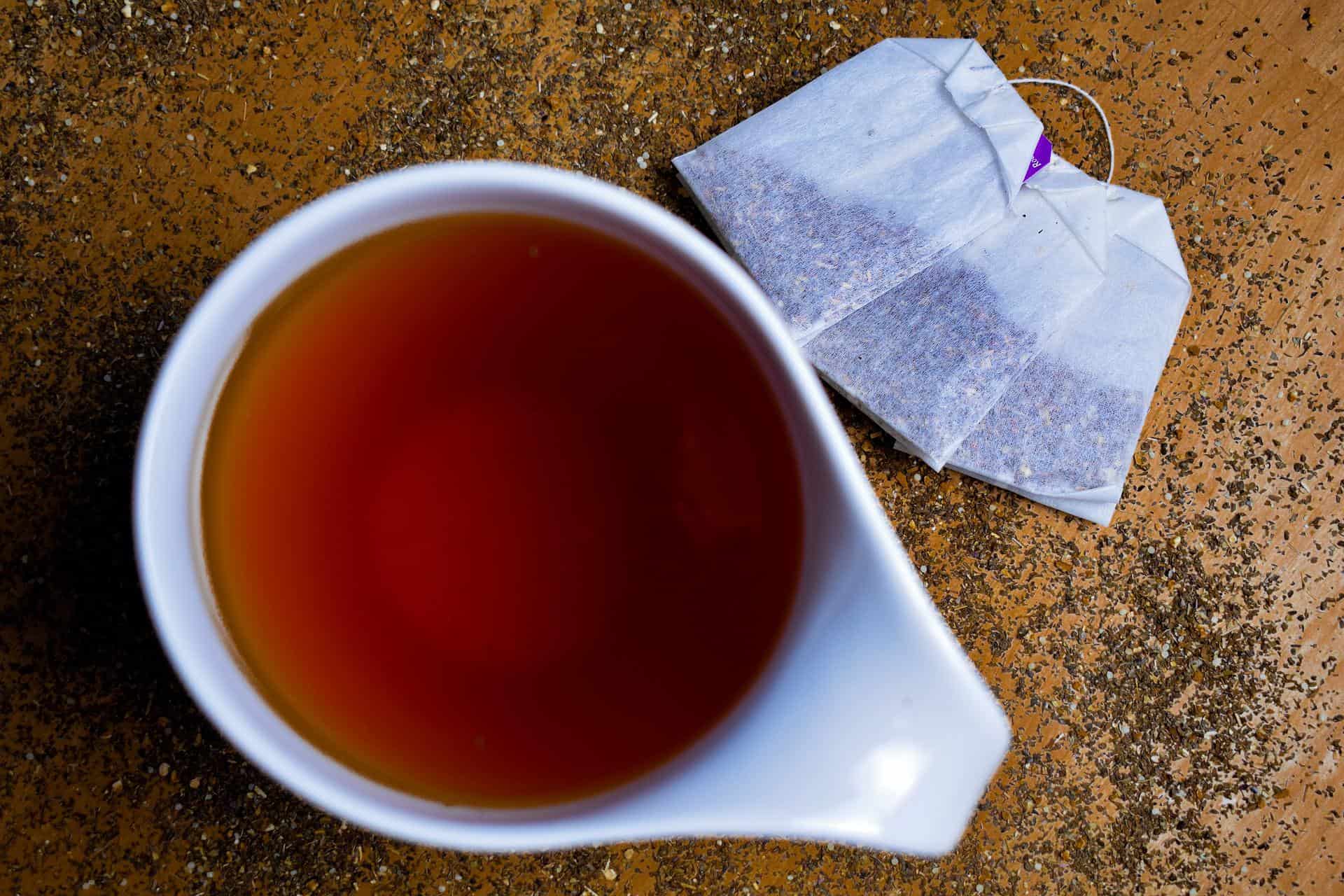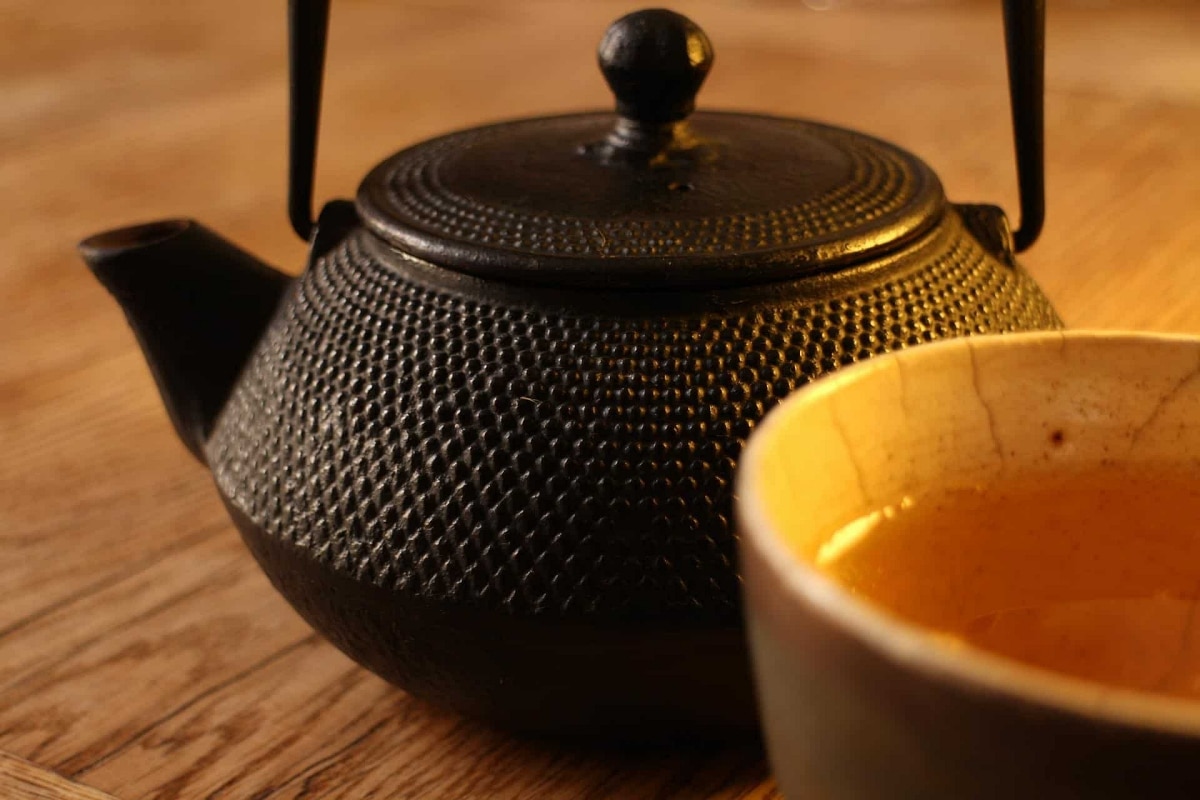HERBAL TEA FOR PAIN AND DISCOMFORT
Yi Guan Acupuncture and Chinese Herbalism is proud to offer our own line of herbal medicinal teas designed to taste good and be good for you. Today we’d like to present Melange, a formula with many functions, including pain and stiffness, digestive issues, and more.
CLASSIC FORMULA
This tea is a modification of the classic formula Yue Ju Wan, or Escape Restraint pill, created by famed Yuan dynasty physician and herbalist, Zhu Danxi. According to Chinese medical principle, there are “six constraints” that can affect the body. The term “constraint” refers to something being pent-up, clumped-up, unable to move, or unable to change. The six constraints specifically are qi, blood, dampness, phlegm, food, and fire. Qi and blood stagnation manifest as body aches, muscle soreness, joint pain etc. QI stagnation also manifests as stifled and frustrated emotions. Dampness and phlegm refer to retentions of fluid or inflammatory infiltrate, phlegm being more severe to the point of noticeable blockage. Food stagnation refers to the heavy and full feeling one has after eating too much. And fire refers to various sensations of heat or irritability in the body and emotions. The ingredients include lovage rhizome, nutgrass rhizome, gardenia fruit seed, atractylodes rhizome, hawthorn fruit, and cinnamon twig. These herbs were selected each for their strong actions to break the various classic constraints just described. This means that this formula has a wide array of uses from various types of pain and stiffness, bloating, heaviness, and other gastrointestinal complaints, and even certain neuropsychiatric issues.
WESTERN PHARMACOLOGY
Though in use for centuries, this formula is relatively new to Western pharmacologic study. At this time, it is not fully known what the full complement of active compounds are in this formula. For some of the ingredients in this blend, there is some research and data known about their Western scientific biochemical properties and mechanism of action. Cinnamon has been the most studied and research has shown anti-inflammatory, antimicrobial, antioxidant, and cardioprotective properties. What receives a lot of attention is that it also seems to act as an insulin mimic and balances glucose metabolism and control. Hawthorn fruit has also received a lot of attention due to its cardioprotective properties as well as its cholesterol and atherosclerosis reducing capabilities. Lovage rhizome was shown to have anti-inflammatory, antioxidant, and antiapoptotic effects by modulating several signaling pathways. Other compounds, phthalides and alkaloids, are present in this herb and give it cardioprotective and hepatoprotective pharmacological properties. Nutgrass rhizome contains compounds such as α-cyperone, α-corymbolol, α-pinene, and many more which impart antioxidant, anti-inflammatory, antimicrobial, anticancer, neuroprotective, antidepressive, and antiarthritic pharmacological properties. Atractylodes rhizome contains, beta-eudesmol, hinesol, and numerous glycosides with biological activity in the digestive, cardiovascular, and genitourinary systems. Most of the compounds in these herbs modulate cell and immune signaling, or mimic compounds further back in the metabolic process. This districts it from Western pharamaceuticals, which often are lab synthesized mimetics of the end metabolic target. When all these herbs with gentle mild cross organ system benefits are blended together, the lends the formula the effect of a gentle clearing and rebalancing of the bodies systems.
ESCAPE RESTRAINT
Whether it’s stagnation of the muscles, joints, digestive system, even the mind, use a serving of this spice mix to escape restraint. The formula has been altered from its original preparation with the addition of cinnamon twig, which according to Chinese herbal theory, will assist in delivering the effects of the lovage rhizome’s pain reducing actions to the joints. This herb gives a sweet flavor to the tea, and will also give a notable pleasurable warm flush throughout the body a few minutes after drinking. As with all of our teas, it is sold as a finely ground powder, and not as loose tea leaves or coarsely ground leaves. This caffeine-free tea is not steeped in a tea bag and later removed, like jasmine tea. But it is dissolved in the water and ingested with the beverage, similar to matcha tea. Add 3 grams of the powder (or 1-2 teaspoons) to a cup of warm water and enjoy!
Join the Yi Guan Newsletter List!
Sent out just once a month, the newsletter keeps you informed about acupuncture, herbalism and special offers at Yi Guan Acupuncture and Chinese Medicine.
Article Sources:
Cinnamon and health, Crit Rev Food Sci Nutr . 2010 Oct;50(9). https://pubmed.ncbi.nlm.nih.gov/20924865/
Bioactivity of cinnamon with special emphasis on diabetes mellitus: a review, Int J Food Sci Nutr . 2012 May;63(3):380-6. https://pubmed.ncbi.nlm.nih.gov/22007625/
Phytochemical and Pharmacological Activity Profile of Crataegus oxyacantha L. (Hawthorn) – A Cardiotonic Herb, Curr Med Chem . 2018;25(37):4854-4865.
https://pubmed.ncbi.nlm.nih.gov/27655074/
Fruits for Prevention and Treatment of Cardiovascular Diseases, Nutrients . 2017 Jun 13;9(6):598, https://pubmed.ncbi.nlm.nih.gov/28608832/
The Protective Effects and Potential Mechanisms of Ligusticum chuanxiong: Focus on Anti-Inflammatory, Antioxidant, and Antiapoptotic Activities, Evid Based Complement Alternat Med . 2020 Oct 19;2020, https://pubmed.ncbi.nlm.nih.gov/33133217/
A systematic review on the rhizome of Ligusticum chuanxiong Hort. (Chuanxiong) Food Chem Toxicol . 2018 Sep;119:309-325, https://pubmed.ncbi.nlm.nih.gov/29486278/
Cyperus spp.: A Review on Phytochemical Composition, Biological Activity, and Health-Promoting Effects, Oxid Med Cell Longev . 2021 Sep 7. https://pubmed.ncbi.nlm.nih.gov/34539969/
[Advances in chemistry, molecular biology and pharmacological of Cangzhu], Zhongguo Zhong Yao Za Zhi . 2009 Oct;34(20), https://pubmed.ncbi.nlm.nih.gov/20069912/
Chen, John & Chen, Tina, Chinese Herbal Formulas and Applications, Art of Medicine Press 2015
